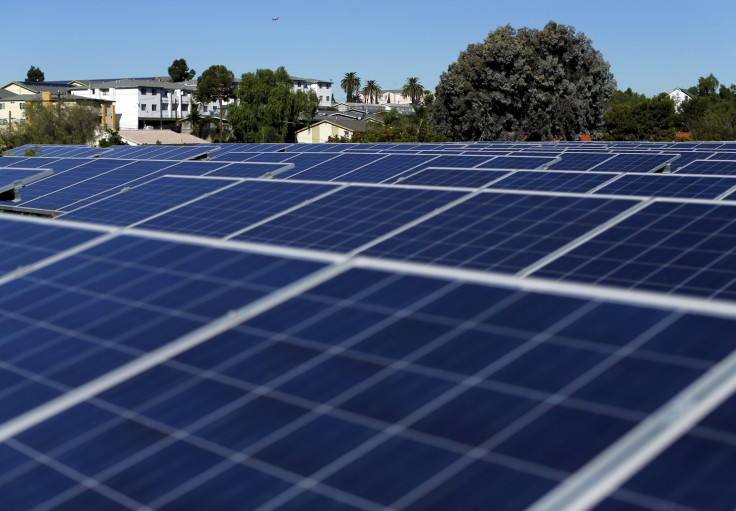Solar Energy: New Alloy Material Could Double The Efficiency Of Solar Panels

A new alloy material could be used to make solar panels that are more efficient and less costly to manufacture than current panels. The alloy is designed to capture the near infrared light that is on the edge of the visible light spectrum, according to Futurity.
Current solar panels allow light to slip through the cracks because solar cells don’t have a layer of an alloy that is sensitive enough to infrared light to capture the particles. The hope is that this new alloy, designed at the University of Michigan, will change that and be able to offer an efficient, cost effective and durable way to harness that energy currently going to waste.
Read: Coal Jobs Statistics: Solar, Wind, Nuclear All Provide More Energy Than Coal In UK
As the solar industry has grown, the cost of creating solar panels has dropped as installation has become more efficient. Efficiency levels for flat silicon solar cells currently sits around 25 percent, with the highest potential efficiency hovering around no more than 30 percent. But the researchers who developed this new alloy are hoping that once it is added into traditional cells it will bring efficiency up to 50 percent or higher.
How do solar panels work?
The energy from the sun’s light transfers to atoms in the solar panels and frees electrons to bounce around and when they do that they create energy. That energy is captured in a current creating electricity. A photovoltaic module groups these solar cells and arranges them together to create energy as a particular voltage. A concentrated photovoltaic system involves a filter-like concentrator that aims the light from a large area at a solar cell, increasing the amount of energy it has access to convert.
Read: US Energy Sees Record-Breaking Wind And Solar Power Output
The idea is to integrate the new alloy into concentrated photovoltaic models. These technologies are slightly different than flat panel technology. Instead they rely on layers of semiconductor alloys that each catch a different part of the solar light spectrum. Adding the new alloy would mean any infrared light that got through previous layers would then be captured by the new alloy, which is where the extra energy would come from.
The alloy would be combined with a process called “doping” that is used to adjust the electrical properties of certain parts of semiconductors used in the panels. Using this process allowed the researchers to change up the manufacturing process so they could use less of the expensive elements that make the manufacturing process so expensive in the first place. This process combined with the new alloy could make the cost of creating the semiconductors 30 percent less expensive to make during the manufacturing process. They effectively simplified the process of creating the concentrated photovoltaic panels while making them more efficient.
The detailed study about the development of the alloy was published in Applied Physics Letters.
© Copyright IBTimes 2024. All rights reserved.











